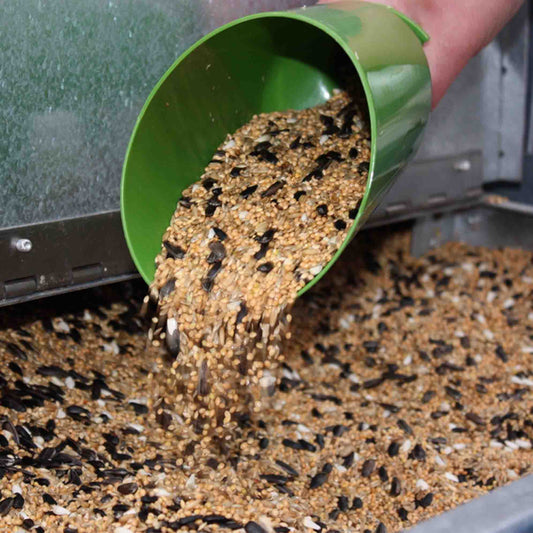
Armchair Naturalist - Peacock Butterfly
Share
I am carrying on with my series of armchair naturalist blogs, a series looking at enjoying the wildlife in my garden in collaboration with Haith’s.
Today, I am looking at a current source of joy the return of the butterflies. With the weather heating up and the sun coming out more I’ve seen the first few butterflies in the garden over the last week. So far visiting I’ve had brimstones, red admirals and today’s star the peacock. There is something magical about seeing butterflies fluttering in. Their erratic flight and the exotic flash of colour always lifts the heart. The peacock featured today was feeding one small pot filled with Muscari on the patio. Even a small pot can attract many beauties.

Butterflies are always a pleasure to have butterflies in the garden and this one stopped for a long time feeding on the Muscari. Butterflies feed through their proboscis. The proboscis is located below the eyes and antennae and curls up when not in use. When they start to feed it uncurls a bit like a chameleons tongue and they suck through it. It’s rather a strange sight and if you’ve never paid attention I suggest you lookout for it. The photo below shows it extended into the tubular flowers of the Muscari.

Providing for butterflies
If you are interested in attracting butterflies you can set up a butterfly banquet. A plate filled with overripe fruit is loved by many butterflies with red admirals a common visitor. I find bananas and grapes work well. These banquets attract lots of visitors, particularly, if left out in autumn as there are often fewer flowers the butterflies can feed on.

If you are looking to attract in butterflies through flowers buddleias are very popular, although they can become beasts. A few smaller varieties have been bred that can be managed within pots. Lavenders draw many butterflies in although they don’t like my clay soil so I keep mine in pots so I can give them a sandier compost mix. Oregano is nectar-rich. Verbena bonariensis is very good for giving late-season flower interest as well as continuing to provide for butterflies. Nasturtiums will bring in swarms of cabbage whites as their caterpillars love eating the leaves. Your leaves end up looking the worse for wear but nasturtiums are so easy to grow that I’m willing to accept the loss in exchange for the butterflies visiting. Most open flowers such as the ox-eye daisies and my bishop’s children dahlias have proved popular. Most flowers forming umbels see many visitors as well.

If you want to provide habitats for butterflies you can buy butterfly homes for them. These provide a space for butterflies that overwinter as butterflies rather than as caterpillars or migrating. I’ve only ever had one used the shed roof has always been a more popular spot.

If you are interested in learning more about how you can help butterflies Butterfly Conservation has many useful articles. Returning to todays sighting here is the peacock butterfly feeding on the Muscari. The footage is a little shakey as I didn’t want to disturb it too much fetching a tripod but you can see the proboscis at work.
I hope you’ve enjoyed my little sighting today and are finding some comfort in these strange time through your gardens.
If you want to attract wildlife to your garden take a look at Haith's bird food range.

Joshua Johnson – Haith’s ‘Armchair Naturalist’ blogger
Written by Haith's Community








